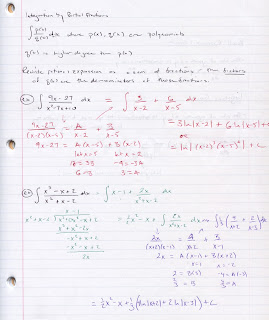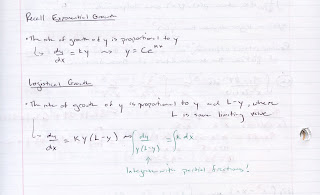Conceivably, the polynomial in the denominator might have a quadratic factor (x^3 - 8 factoring into (x - 2)(x^2 + 2x + 4)) or a repeated factor (x^3 - 2x^2 + x factoring into x(x - 1)^2). In these instances, the algebra of solving the partial fractions is a bit more challenging but as it turns out, we will not have to worry about those cases in BC Calculus. Simple, non-repeated linear terms are the only partial fractions problems we'll see according to the BC curriculum from The College Board.
(If we had "extra" days for instruction - this is the kind of thing I might spend another day on...)
We worked a couple examples in class. One thing to remember is that partial fractions only works if the denominator of the rational function is greater than that of the numerator. If the degrees are the same (or the top is greater), then there is division to be done.
Notes are below.
p1

p2

No comments:
Post a Comment